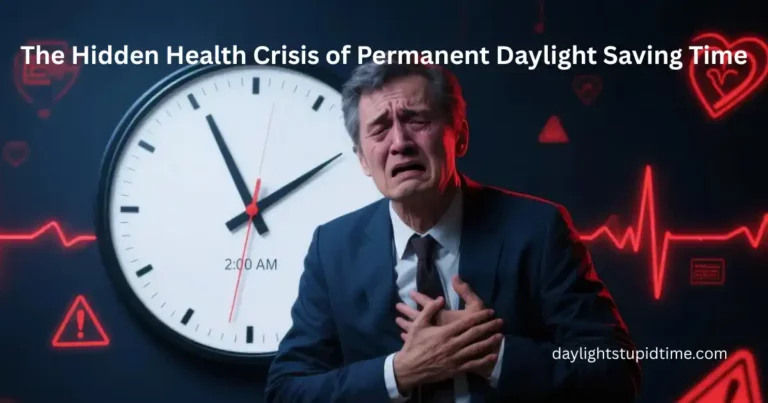The Hidden Dangers of Daylight Saving Time
Health Risks and Financial Impacts
Daylight Saving Time (DST) is an annual practice observed by many countries, involving setting clocks forward by one hour in spring and back again in autumn. While originally introduced to conserve energy, modern studies reveal that this seemingly simple clock adjustment has serious consequences, posing medical risks and substantial financial impacts on society.
Medical Risks of Daylight Saving Time
Adjusting clocks disrupts the human body’s internal circadian rhythm, negatively affecting overall health. One of the most alarming medical concerns associated with DST is an increase in cardiovascular problems. Research published by the American Heart Association indicates that the risk of heart attacks rises by approximately 24% in the days immediately following the springtime transition.
Sleep deprivation is another significant issue caused by DST. When clocks move forward in spring, individuals lose approximately 40 minutes of sleep on average. This sudden disruption can lead to increased fatigue, decreased alertness, and reduced cognitive performance. Moreover, insufficient sleep exacerbates mental health conditions, such as anxiety and depression, making the DST period especially challenging for those already vulnerable.
Furthermore, DST contributes to a notable increase in accidents. According to data from the National Highway Traffic Safety Administration, fatal vehicle crashes spike by approximately 6% during the first week after the springtime clock adjustment. Workplace injuries also rise, as tiredness and reduced concentration lead to decreased productivity and higher accident rates, particularly in hazardous industries.
Financial Impacts of Daylight Saving Time
Aside from health risks, DST imposes significant financial burdens on the economy. One substantial economic impact stems from reduced workplace productivity. A study conducted by the Journal of Applied Psychology estimated that DST-related fatigue costs the U.S. economy around $434 million annually. Employees suffering from disrupted sleep demonstrate lower efficiency, diminished focus, and higher absenteeism rates, all of which negatively affect business profitability and economic output.
The uptick in accidents and workplace injuries during DST further escalates costs. Increased medical expenses, insurance claims, and legal liabilities strain individuals, employers, and insurance providers alike. Businesses must absorb costs associated with increased worker compensation claims and higher insurance premiums, directly impacting their bottom lines.
Energy savings, once the primary justification for DST, have also been debunked. Research from the U.S. Department of Energy indicates that DST reduces electricity consumption by less than 1%, providing negligible economic benefit. Meanwhile, the increased use of heating and cooling systems during extended daylight hours actually boosts energy expenditure in many regions, offsetting potential savings.
Reevaluating the Need for DST
Given these significant health and financial drawbacks, many countries are reconsidering their commitment to DST. The European Union has already moved toward abolishing DST, citing clear evidence of its negative impacts outweighing any minimal benefits. In the United States, several states have introduced legislation to eliminate DST, advocating for permanent standard time or continuous daylight saving time to avoid the disruptive biannual clock change.
Public awareness and policy advocacy are essential to mitigating the harmful consequences associated with DST. Eliminating this outdated practice could significantly improve public health, reduce accident rates, and enhance economic productivity. The growing body of research clearly demonstrates that the dangers of Daylight Saving Time far exceed its diminishing benefits, prompting an urgent need for global reevaluation.
By prioritizing health and economic stability over outdated traditions, societies worldwide can safeguard their citizens and promote sustainable growth. The dangers of Daylight Saving Time are no longer hidden—it’s time to make informed decisions for a healthier, more economically stable future.


